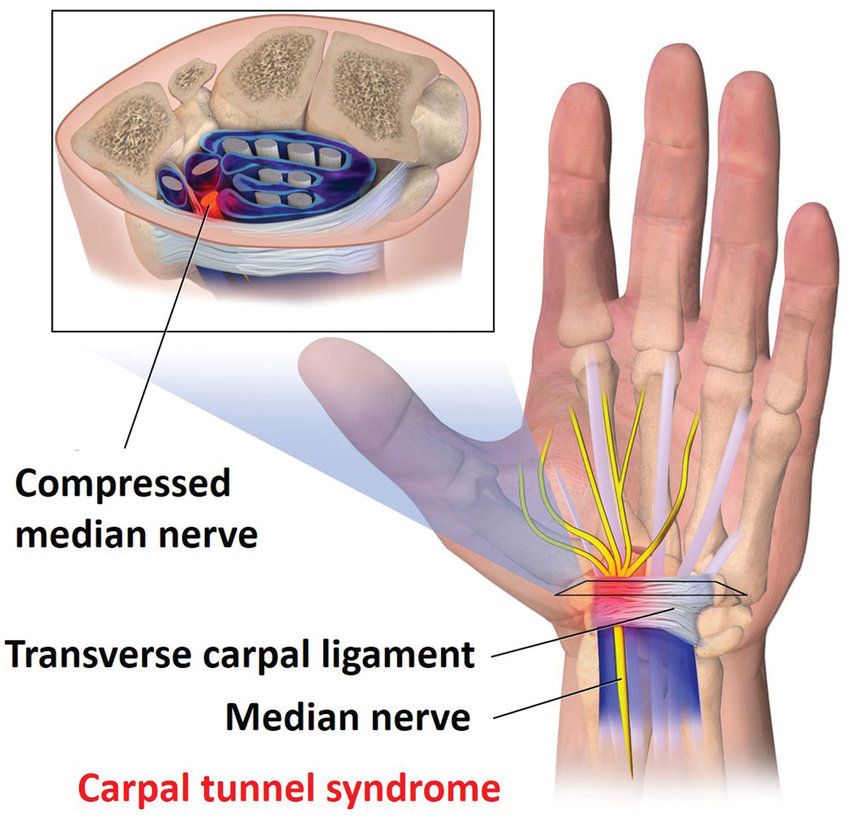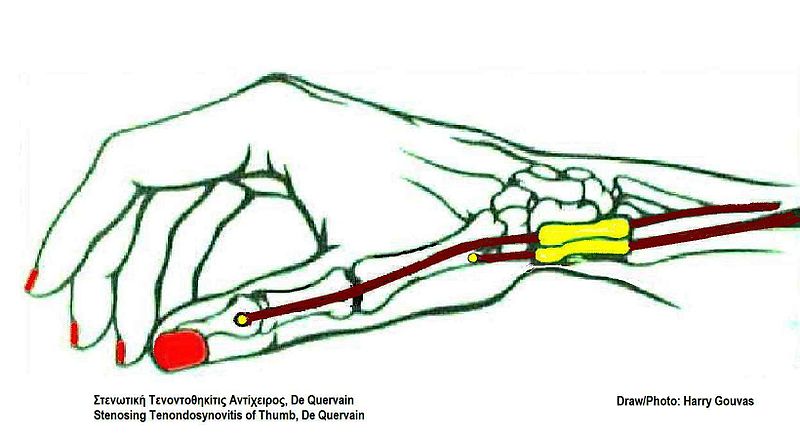The Hidden Risks of Excessive Typing on Hands and Wrists
If you often experience aching, burning, or stiffness in your hands and wrists after long hours of typing, you are not alone. Many office workers, particularly those working from home, report discomfort that could indicate underlying musculoskeletal or nerve-related conditions.
Health experts suggest that prolonged keyboard and mouse use can lead to inflammation, nerve compression, or repetitive strain injuries. Understanding these risks and implementing preventive measures is crucial to maintaining hand and wrist health.
Common Causes of Hand and Wrist Pain from Typing
1. Carpal Tunnel Syndrome (CTS)
Carpal tunnel syndrome is one of the most prevalent typing-related injuries. It occurs when the median nerve, which runs through the carpal tunnel in the wrist, becomes compressed due to prolonged or improper hand positioning. Symptoms include tingling, numbness, and weakness in the fingers and hands.

2. Tendonitis
Overuse of the hands and wrists can cause inflammation of the tendons, leading to tendonitis. This condition often manifests as pain, swelling, and stiffness in the wrist, making it difficult to perform everyday tasks.
3. Cubital Tunnel Syndrome
Similar to carpal tunnel syndrome, cubital tunnel syndrome affects the ulnar nerve, which runs through the elbow. Poor posture, excessive bending of the elbow, or resting on hard surfaces for long periods can contribute to this condition, causing pain and numbness in the forearm and hand.
4. De Quervain’s Tenosynovitis
This condition affects the tendons on the thumb side of the wrist, leading to pain and difficulty in gripping objects. It is commonly caused by repetitive thumb and wrist movements, such as scrolling on a phone or excessive typing.

5. Arthritis
While arthritis is not directly caused by typing, prolonged strain on joints can aggravate pre-existing conditions, leading to stiffness, swelling, and discomfort.
Diagnosing and Treating Hand and Wrist Pain
Medical Diagnosis
If pain persists for more than a month or worsens over time, seeking medical evaluation is essential. A healthcare provider may perform a physical examination, nerve conduction studies, or imaging tests (such as X-rays or MRI scans) to determine the cause of discomfort.
Treatment Options
- Physical Therapy: Hand and wrist exercises can strengthen muscles, improve flexibility, and reduce pain.
- Anti-Inflammatory Medications: NSAIDs (nonsteroidal anti-inflammatory drugs) like ibuprofen can help alleviate pain and swelling.
- Wrist Splints: Wearing a splint at night or during work can help reduce strain and provide support.
- Corticosteroid Injections: For severe inflammation, doctors may recommend steroid injections to reduce pain and swelling.
- Surgery: In extreme cases, procedures such as carpal tunnel release surgery may be necessary to relieve nerve compression.
Preventive Measures for Typing-Related Injuries
1. Ergonomic Workstation Setup
Adjusting your desk, chair, keyboard, and mouse to a comfortable height can significantly reduce strain on your hands and wrists. Ensure that your wrists remain in a neutral position while typing.
2. Take Regular Breaks
Experts recommend taking a short break every 20–30 minutes to stretch and relax your hands and wrists. Simple wrist and finger stretches can help reduce tension and improve circulation.
3. Use an Ergonomic Keyboard and Mouse
Ergonomic keyboards and mice are designed to promote a more natural wrist position, reducing strain and preventing injuries over time.
4. Utilize Voice-to-Text Software
Speech recognition software, such as those available in Microsoft Office and Google Docs, can minimize repetitive hand movements, reducing the risk of overuse injuries.
5. Maintain Proper Posture
Keep your wrists elevated slightly above the keyboard while typing and avoid resting them on hard surfaces for extended periods.
6. Strengthen Hand Muscles
Regular exercises, such as squeezing a stress ball or using hand therapy putty, can help improve grip strength and flexibility.
The Long-Term Outlook
Ignoring early symptoms of hand and wrist pain can lead to chronic conditions that may require invasive treatments. However, with early intervention, proper ergonomics, and lifestyle modifications, most typing-related injuries are manageable.
Employers also have a role in preventing workplace injuries. Organizations should provide ergonomic assessments, implement policies for regular breaks, and educate employees on maintaining hand and wrist health.
By making small yet impactful adjustments, both individuals and workplaces can foster a healthier, pain-free work environment.
Also Read About : Unlocking Knee Pain Relief: How Physiotherapy Can Change Your Life!
Visit Us At : https://g.co/kgs/rTqAjgt





